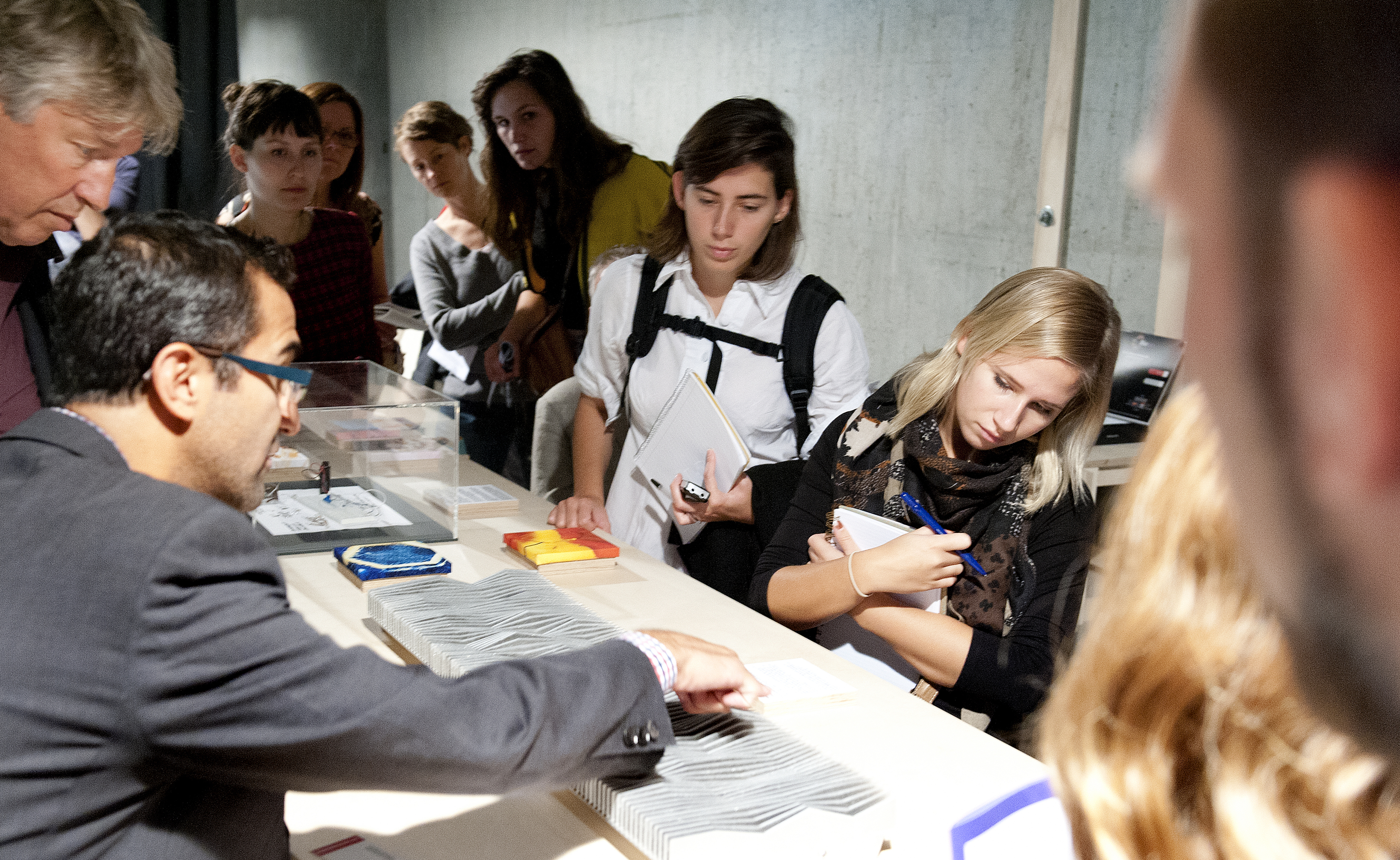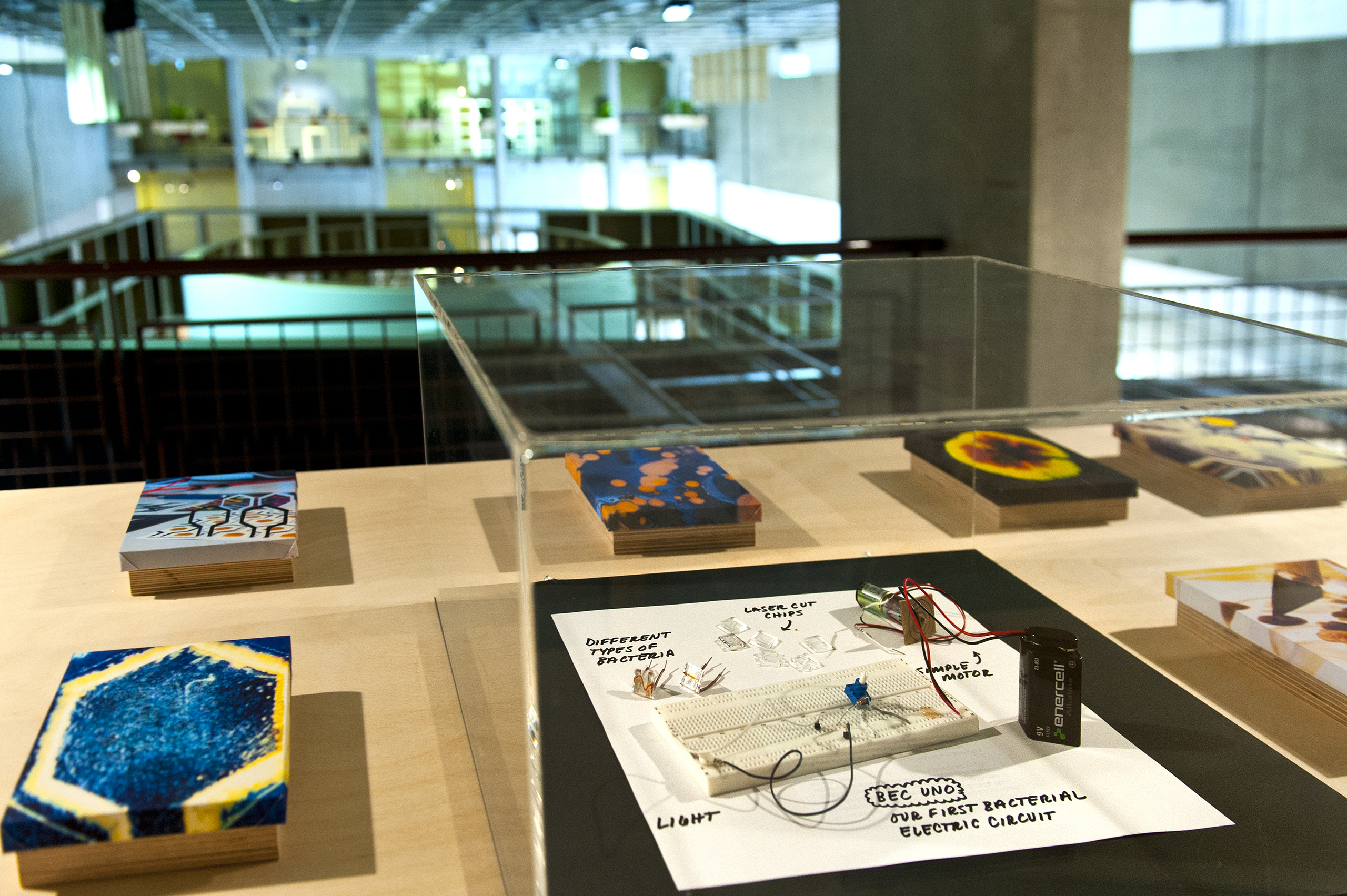Could you briefly describe the essence of your project?
This project is about making genetics engaging and accessible through design and data visualization.
We all have a general understanding that part of who we are is determined by our DNA, our genetic blueprint. But unless you are a cellular biologist or a geneticist, the whole idea of who we are at the genetic level is quite difficult to grasp. So we wanted to create a physical manifestation of an individual's genetic data that would trigger conversations about the role genetics play in who we are.
We identified 92 genetic data points (Single Nucleotide Polymorphism - SNPs) from my genome (via the personal genetics company 23 & ME) and developed algorithms and software to translate that information into the Genetic Landscape, a genetic sculpture if you like. The shape of every fourth aluminum leave is determined by the combination of SNPs in a particular chromosome, for example an AA (Adenine Adenine combination) might be a peak in the landscape, while a TT (Thiamine Thiamine) might be a ravine. We also developed a set of cards that can be used to decode the sculpture. By introducing card #1 after the aluminum leave marked #1, you can figure out what the shape means.
How does your project contribute to the goal of ‘working with biology in creative and respectful ways,’ as curator William Myers puts it?
There is a critical communication and understanding gap between scientists and the rest of the people. Design and data visualization can be a powerful bridge to help reduce that gap. We need to have many more conversations about how biology works and how we can harness its amazing capabilities.
Some people can see the Genetic Landscape as a piece of art and that is OK, and others might get curious about how we made it, why each leave has the shape it has, what certain genetic data points mean, etc. Basically, the Genetic Landscape is designed to allow the viewer to decide how far he/she wants to go from aesthetics, layout, materials to the underlying genetic data and principles.
Do you have a suggestion for how the expertise of artists and designers could be linked with that of scientists?
We need to leave our comfort zone. I think on one side, designers and artists need to learn the basics of biology and with the right guidance, need to roll-up their sleeves and do biology experiments, whether it's creating interesting patterns by growing bacteria or making paper with fungi. Biology is a design medium. On the other side, scientists need to understand that people don't experience science or technology; people experience products, services and spaces. Basically, we need to do more projects that bring scientists and designers together and we need to push each other out of the comfort zone of our own craft.
What is your favorite new project in the biodesign field at the moment and why?
A team of designer and I recently made a bacterial electrical circuit. We are basically growing components out of bacteria and fungi for a circuit and prototyping different ways to use the characteristics of the bacteria to regulate the circuit.
What is the next step in your own project?
The Genetic Lancscape was a prototype and we are not sure where we will take it next. We are thinking of designing a much larger version of the prototype with lights and laser controllers, and water jets for Burning Man 2014.
Rodrigo Martinez, 20 November 2013
Note: Genetic Landscape and Bacterial Electric Circuit are developed by Matt Brown, Tim McGee, Rodrigo Martinez, Alex Staudt, Scott Mackie, Jason Robinson, Jenn Sarich-Harvey, Todd Vanderlin, all designers at IDEO - Boston


